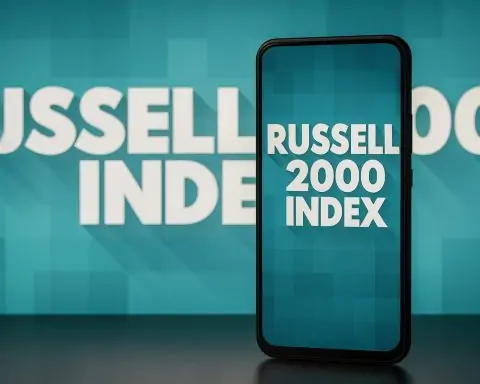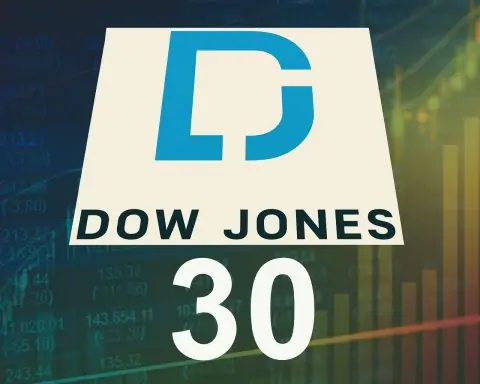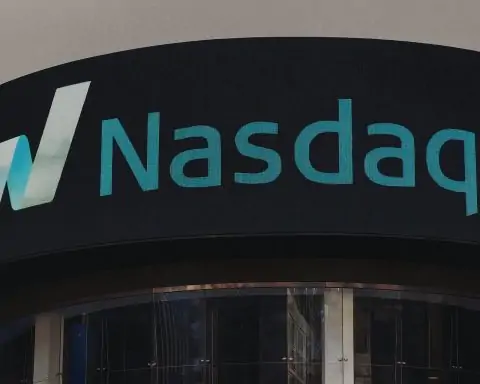AST SpaceMobile, Inc. (NASDAQ: ASTS) heads into the new week as one of the most closely watched “satellite‑to‑smartphone” names on the market. After a blockbuster rally of roughly 200% in 2025, the stock is now digesting an earnings miss, a sharp pullback, and a wave of new long‑term partnerships with some of the world’s largest mobile operators. [1]
Here’s a complete look at where AST SpaceMobile stands today, November 16, 2025 – on price, fundamentals, contracts and the road to its planned 2026 commercial launch.
- Last close (Friday, Nov 14): $61.40 on Nasdaq
- Intraday range Friday: $58.00 – $64.84
- 52‑week range: $17.50 – $102.79 [2]
- Market cap today: roughly $22–23 billion based on current price and shares outstanding [3]
According to technical analysis site StockInvest, ASTS has:
- Fallen five sessions in a row
- Declined in eight of the last ten trading days, down about 23% over that span
- Shown very high daily volatility, moving around 9–12% per day recently [4]
Alternative‑data platform Quiver Quantitative notes that ASTS fell about 12% over the past week, yet it still ranks among the most‑searched tickers on their platform, underlining intense retail and institutional interest. [5]
Even after the pullback, ASTS remains dramatically higher year‑to‑date: MarketBeat and Simply Wall St both estimate a YTD gain around 200%+ as investors have priced in the potential of global satellite‑to‑cellphone service. [6]
Q3 2025 earnings: huge growth, but a miss
AST SpaceMobile reported Q3 2025 results on November 10 and followed with a detailed business update. The numbers illustrate both explosive top‑line growth and the reality that the company is still firmly in investment mode. [7]
Headline Q3 numbers
From the company’s report and independent coverage: [8]
- Revenue: about $14.7 million
- Up roughly 1,200% year‑over‑year, driven mainly by U.S. government contracts and gateway deliveries
- Below analyst expectations, which clustered around $22 million
- Net loss: roughly $122.9 million, or –$0.45 per share, missing consensus, which looked for a narrower loss
- Operating expenses: about $94.4 million on a GAAP basis, with adjusted operating expenses around $67.7 million
In short, Q3 finally showed real revenue traction – but not as much as Wall Street was hoping for, and losses remain sizeable as the company builds out its constellation and ground infrastructure.
Crucially, management reaffirmed its second‑half 2025 revenue guidance of $50–75 million, implying that they expect a much stronger Q4 to “catch up” after the Q3 shortfall. [9]
Balance sheet and funding: $3.2B+ liquidity, fresh convertibles
To support its satellite build‑out and multi‑launch campaign, AST SpaceMobile has aggressively bolstered its balance sheet: [10]
- Cash, cash equivalents & restricted cash: about $1.2 billion as of September 30, 2025
- Pro‑forma total liquidity: roughly $3.2 billion when including proceeds and availability under its at‑the‑market (ATM) equity program and recent note transactions
- New 10‑year convertible notes: about $1.15 billion of gross proceeds, with a 2.0% coupon and an effective conversion price in the mid‑$90s per share
- Legacy 4.25% convertible notes were reduced to $50 million outstanding, with the associated capped call monetized for additional cash
Earlier this quarter, AST also completed a separate $1.0 billion convertible notes and equity offering, which initially pressured the stock on dilution fears but significantly strengthened long‑term funding for its global constellation. [11]
For now, AST looks well‑funded to push through its first commercial deployment phase, though the company openly acknowledges that satellite manufacturing and launches will keep capital needs elevated. [12]
Commercial momentum: stc, Vodafone, Verizon and 50+ operator partners
The most bullish part of the Q3 narrative is the sheer scale of commercial commitments AST is lining up with major mobile network operators (MNOs).
10‑year deal with stc group (Middle East & Africa)
In late October, AST announced a 10‑year commercial agreement with Saudi Arabia’s stc group, a leading digital operator in the Middle East and North Africa. Key points: [13]
- Covers Saudi Arabia and select markets across the Middle East and Africa
- AST will build three ground gateways in Saudi Arabia and a Network Operations Center (NOC) in Riyadh
- Includes a significant prepayment (about $175 million) for future services, cementing long‑term revenue visibility
This is AST’s first regional deal of this size in MENA and positions the company as a key technology partner in stc’s ambition to extend connectivity to remote areas. [14]
Europe: new EU constellation with Vodafone
On November 6, AST and Vodafone unveiled plans for a new EU satellite constellation and confirmed Germany as the main European Sovereign Satellite Operations Centre. [15]
- Vodafone, already an investor in AST, said operators in 21 EU member states have shown interest in adopting the service.
- Reuters reports that AST aims to deploy up to 60 satellites by 2026, and currently operates only a handful, highlighting how early the rollout still is compared with rival Starlink, which has thousands of satellites in orbit. [16]
This EU‑focused constellation also plays into broader geopolitical themes around European “sovereign” space infrastructure, potentially making AST a strategic asset for the region.
Verizon and a growing roster of partners
In its Q3 business update, AST highlighted: [17]
- A definitive commercial agreement with Verizon, building on their earlier partnership and targeting near‑complete geographical coverage of the continental United States.
- A new U.S. government contract award (subject to final negotiations) alongside existing government work.
- A total of more than 50 MNO partners globally, representing almost 3 billion subscribers combined.
Taken together, these deals underpin over $1 billion in contracted revenue commitments from partners even before full commercial service launch. [18]
Launch roadmap: BlueBird satellites and early 2026 service
AST’s near‑term execution risk centers on its BlueBird satellite constellation and the timing of launches.
From the Q3 update: [19]
- BlueBird 6 has been shipped to India, with launch expected in the first half of December 2025.
- BlueBird 7 is slated to ship to Cape Canaveral in November for another launch shortly afterward.
- AST plans five orbital launches by the end of Q1 2026, using multiple launch providers, aiming for 45–60 satellites in orbit by the end of 2026.
- The company is working on a proprietary ASIC providing up to 10 GHz of processing bandwidth, targeted for integration in early 2026.
On the service side, AST expects: [20]
- Initial, intermittent service activation across the continental U.S., followed by roll‑outs in Canada, Japan, Saudi Arabia and the U.K. in early 2026.
- A broader commercial launch window in early 2026 for its direct‑to‑device SpaceMobile service.
AST has also highlighted an industry milestone: 3GPP Release 19 radio‑frequency and conformance packages for L‑ and S‑band are now stabilized, with profiles matching AST’s operating bands. This helps ensure its satellite‑to‑phone links fit into the same global standards mobile operators already use. [21]
How Wall Street is valuing ASTS now
Valuation: extreme multiples vs peers
Simply Wall St points out that AST SpaceMobile currently trades at a price‑to‑book ratio around 21.9x, compared with roughly 1.1x for the broader U.S. telecom sector and about 5.9x for a peer group of comparable companies – a massive premium on this metric. [22]
On the other hand, their discounted cash‑flow (DCF) model implies the stock could still be trading well below an estimated long‑term fair value if management delivers on ambitious growth targets, showing how wide the disagreement is on what the company is really worth. [23]
Macro/valuation snapshots from various sources show:
- Market cap: around $22–23B as of November 16, 2025 [24]
- EBITDA (TTM): roughly –$230 million, with very negative EBITDA margin, underscoring that AST is still pre‑profit and heavily investing in growth [25]
Analyst ratings and price targets
Quiver Quantitative and MarketBeat data together show a divided analyst community: [26]
- Quiver tallies six recent analyst price targets with a median of about $57.50.
- High targets include $95 (B. Riley Securities, “Buy”) and $87 (Clear Street).
- More cautious targets include around $60 (Barclays, “Underweight”), $55 (BofA), and low‑$40s from Scotiabank and UBS (“Sector Underperform”/similar ratings). [27]
- MarketBeat’s compiled data show an average target near the mid‑$40s and an overall consensus rating closer to “Reduce” than “Buy.” [28]
Zacks, meanwhile, has described Q3 as “lackluster” and notes that consensus loss estimates for 2025 and 2026 have widened significantly, signaling that analysts expect heavier near‑term spending and slower profitability than previously thought. [29]
Who’s buying (and selling): insiders and institutions
Quiver’s latest data shed light on what insiders and big funds are doing with ASTS: [30]
- Over the last six months, AST insiders have made six open‑market transactions – all of them sales and no purchases.
- Recent sellers include the Chief Technology Officer, President, CFO/CLO, and Chief Operating Officer, collectively disposing of well over 100,000 shares.
- On the institutional side, activity is mixed but overall skewed toward accumulation:
- 267 institutional investors increased their positions in the latest reported quarter, while 159 reduced holdings.
- Large reductions came from firms like D.E. Shaw, Goldman Sachs and Citadel, which cut substantial positions.
- Significant buyers included Vanguard, UBS and Wells Fargo, each adding well over $80 million worth of shares.
Separately, an earlier MarketBeat filing shows Bank of New York Mellon boosting its stake to more than 760,000 shares, valued around $35–36 million, indicating continued interest from traditional asset managers. [31]
Technical snapshot: high risk, “hold” from quant models
StockInvest’s AI‑driven technical model currently labels ASTS a “hold/accumulate” candidate, upgraded from “sell,” but flags multiple risk factors: [32]
- Price has been in a short‑term downtrend, with sell signals from both short‑ and long‑term moving averages.
- Intraday swings above 10% are now common, classifying the stock as “high risk.”
- Support is seen near the high‑$50s, with resistance in the mid‑$60s and above.
Their model projects a wide possible range over the next three months, reflecting the inherently speculative nature of an early‑stage space company whose fortunes depend on flawless execution of launches and network integration. [33]
Industry backdrop: the satellite‑to‑phone race is heating up
AST SpaceMobile is not alone in chasing the dream of direct‑to‑device connectivity:
- SpaceX’s Starlink is already partnering with carriers and recently inked a deal with Vodacom in South Africa to extend coverage across the continent using low‑Earth‑orbit satellites. [34]
- Other satellite operators like Globalstar and Iridium are expanding IoT and mobile coverage deals, while Amazon’s “Project Kuiper” (now rebranded within the LEO ecosystem) continues to build out a large broadband constellation. [35]
Compared with these giants, AST’s differentiator remains its focus on standard, unmodified smartphones, its tight integration with terrestrial MNOs, and potentially more “cellular‑native” economics if it can scale to tens of millions of users. [36]
But the same backdrop also underscores the risk: telcos are clearly willing to sign deals with multiple satellite providers, meaning AST must compete not only on technology, but also on pricing, reliability and regulatory approvals over the next several years. [37]
Key things to watch after November 16, 2025
For investors tracking AST SpaceMobile from here, the main catalysts over the coming months include: [38]
- Launch execution
- Successful December launch of BlueBird 6 and subsequent BlueBird 7 mission
- Staying on schedule for five launches by the end of Q1 2026
- Early service activations
- Initial intermittent coverage in the U.S., followed by Canada, Japan, Saudi Arabia and the U.K. in early 2026
- Further commercial contracts
- Additional government work and new MNO agreements, particularly in Europe, Latin America and Africa
- Regulatory milestones
- Approvals from national telecom regulators and spectrum authorities across key markets
- Next earnings report
- Current estimates point to the next major earnings date around March 2, 2026, when investors will see whether H2 2025 revenue landed inside the guided $50–75M range.
Bottom line: a high‑stakes, high‑valuation execution story
As of November 16, 2025, AST SpaceMobile sits at an inflection point:
- The company now has real revenue, more than $1 billion in contracted commitments, and over $3.2 billion in liquidity, plus flagship deals with stc, Vodafone and Verizon that validate demand for direct‑to‑device satellite service.
- At the same time, the stock trades at steep valuation multiples, insider selling has attracted attention, and analysts are split between high‑conviction upside targets and cautious “Reduce/Underweight” calls, especially after a Q3 earnings miss and widened loss forecasts.
For now, ASTS remains a volatile, execution‑driven story: its performance in the coming year will likely depend less on quarter‑to‑quarter trading noise and more on whether the company can put its BlueBird constellation into orbit on time and translate marquee partnerships into recurring, scalable revenue.
Disclaimer: This article is for informational purposes only and does not constitute investment or financial advice. Always do your own research or consult a licensed financial advisor before making investment decisions.
References
1. www.marketbeat.com, 2. stockinvest.us, 3. www.wallstreetzen.com, 4. stockinvest.us, 5. www.quiverquant.com, 6. www.marketbeat.com, 7. markets.financialcontent.com, 8. markets.financialcontent.com, 9. markets.financialcontent.com, 10. markets.financialcontent.com, 11. coincentral.com, 12. markets.financialcontent.com, 13. www.businesswire.com, 14. www.businesswire.com, 15. www.businesswire.com, 16. www.reuters.com, 17. markets.financialcontent.com, 18. markets.financialcontent.com, 19. markets.financialcontent.com, 20. markets.financialcontent.com, 21. x.com, 22. simplywall.st, 23. simplywall.st, 24. www.wallstreetzen.com, 25. in.tradingview.com, 26. www.quiverquant.com, 27. www.quiverquant.com, 28. www.marketbeat.com, 29. www.zacks.com, 30. www.quiverquant.com, 31. www.marketbeat.com, 32. stockinvest.us, 33. stockinvest.us, 34. www.reuters.com, 35. simplywall.st, 36. markets.financialcontent.com, 37. www.reuters.com, 38. markets.financialcontent.com







